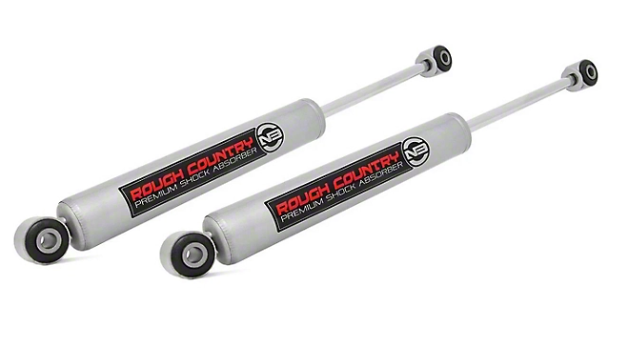
Do You Recognize the 5 Signs of Worn Shocks & Struts?

Being able to identify when your shocks and struts are failing ensures the continued safety of you and your passengers. While there are slight differences in how shocks and struts perform the job of absorbing the bumps and bruises of daily road travel, their basic design is quite similar – as well as their signs of wear. To restore your ride’s smooth handling and overall suspension performance, watch out for these 5 symptoms of bad shocks.
A Loud or Bumpy Ride
Struts are a solid unit that allows your chassis, wheel assembly, and body to move smoothly over bumps in the road. If your struts are worn, it’s possible to hear a noticeable knocking or clunking sound caused by metal-to-metal contact. A rough ride can also be caused by a failing piston seal inside older shocks that will make you feel every bump and dip in the road right through your steering wheel. When replacing shocks or struts, it’s best to replace both sides at the same time.
Pulling to One Side or Nose Diving While Braking
If your car pulls to one side, also called a floating front-end, it’s a clear indication that your alignment is off – often caused by a worn-out strut assembly. For vehicles with shocks, when the valving or piston seal inside has failed you can feel extreme movement even at the slightest steering or brake application due to the loss in dampening. For example, when you hit the brakes, your vehicle’s weight will shift forward farther than expected causing the nose to dive.
Takes More Time to Brake
Blown shocks require extra time to take up all the piston rod length. So, in addition to your vehicle’s nose diving when you apply the brakes, failing shocks also lengthen the time and distance it takes to come safely to a complete stop. One way to determine you have a blown shock or strut is to perform a “bounce test" - this requires going to each corner of your car and pushing down. When you let go, your car should steadily stabilize, then settle back at rest height. A good rule of thumb is if it bounces more than twice, it’s time to shop for new shocks.
Uneven Tire Wear
Worn shocks and struts are unable to keep your tires firmly in contact with the road. This causes a bouncy ride that constantly changes along with road conditions. The parts of the tire that stay in contact with the road more frequently will show up as excessively worn patches on your tire tread. Before you invest in a fresh set of tires, it’s important to have your suspension aligned and the proper replacement shock type installed.
Leaking Fluid
Sometimes all the physical signs from driving the vehicle are no substitute for a good ol’ fashioned visual inspection. Often when seals go, for hydraulic-based shocks, fluid will bleed from the assembly and show wetness or drips surrounding the perimeter of the shock body or bottom of the boot. Not only will fluid leaks cause your shock performance to suffer, but they’ll leave unsightly spots on your driveway.